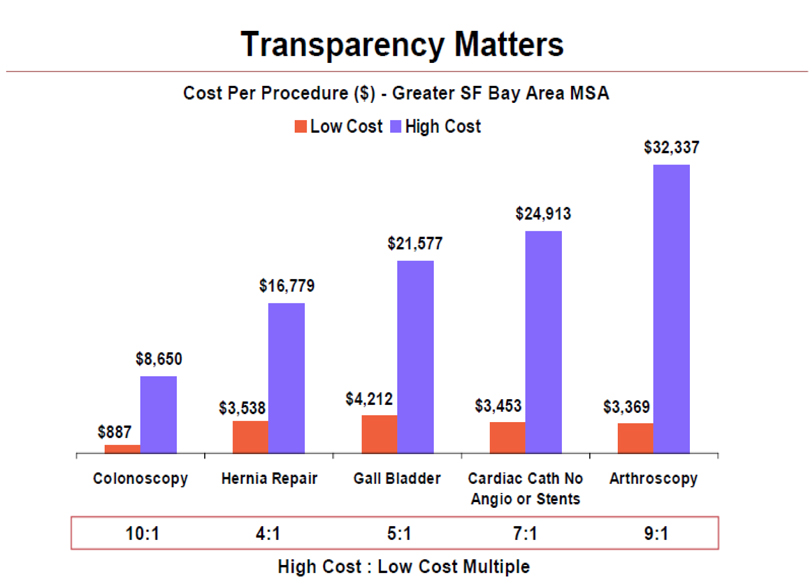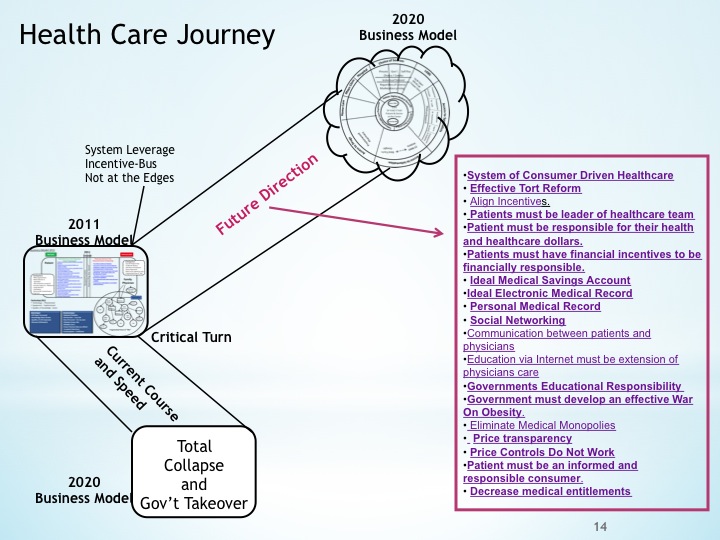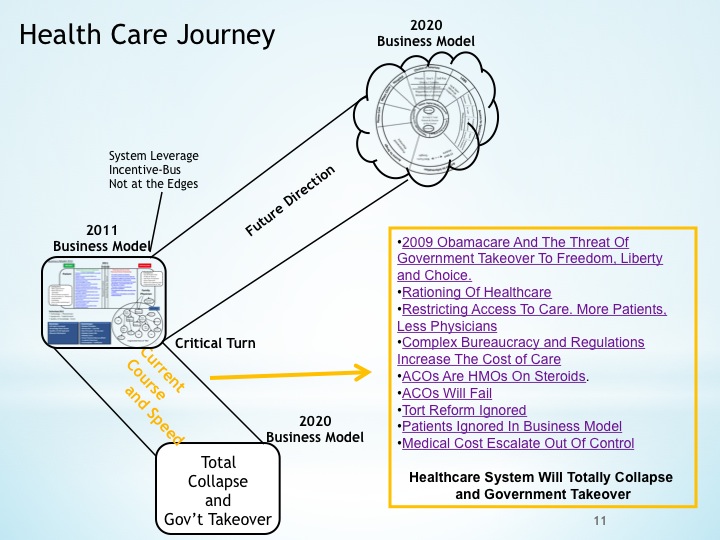Price Competition for Medical Care
Stanley Feld
M.D.,FACP,MACE
Thank goodness many physicians are starting to recognize the problems of abuse
and waste in government run healthcare programs. The run up in cost is secondary to the
healthcare insurance industry taking 40% of the healthcare dollars off the top
as patient care dollars and the hospital systems over inflating the costs to
patients because of inflated operating expenses and administrative salaries.
Physicians realize that an efficient free market system will reduce the
cost of care. Physicians are tired for being blamed for the entire healthcare
systems problems. They do not deny being part of the problem.
Many physicians have decided to move forward and develop consumer driven
free market systems of care.
One example is Nextera Health in Longmont Colorado. I have discussed this
previously.
Nextera Healthcare
is a new model for delivering primary care at an affordable price. It follows
many of the principles embodied in my ideal medical savings account
model. Nextera delivers compassionate care at an affordable cost and
encourages patients to be responsible for their health.
Nextera
Healthcare services all of a families needs at an affordable monthly cost. It is
combined with a high deductible healthcare insurance plan to cover costly
illness.
The
reason I am so high on Nextera Healthcare is that it closely fits a model of
healthcare delivery that will work to decrease the cost of medical care. It
will increase the quality of medical care and permit primary care to be a
viable specialty.
Nextera Healthcare has the potential to permit the patient
to be responsible for managing their health and their healthcare dollars.
Nextera
Healthcare has the potential to reduce healthcare cost to individuals, employer
sponsored self insured plans, associations and even government funded
healthcare plans while permitting consumers to make their own healthcare
decisions.
Surgeons are developing their own innovative systems. In free standing surgery centers they are
developing surgical procedures that cost at least 70% less than Medicare is
paying hospitals for the same procedure.
Dr. Keith Smith, co-founder and managing
partner of the Surgery Center of Oklahoma, took
an initiative that would only be considered radical in the health care
industry.
Dr. Smith posted a
list of prices online for 112 common surgical
procedures. Dr. Smith ,an anesthesiologists, became disillusioned about how
patients were treated and charged at St. Anthony Hospital in Oklahoma City.
Dr. Smith’s goal
was to create a for-profit facility that could deliver first-rate care at a
fraction of what traditional hospitals charge. The goal was to eliminate the
hospital and healthcare insurance industry as the middlemen while decreasing
the cost of surgical care without decreasing the quality of care.
He wanted to create a system in which consumers and their employers
could receive surgical value at an affordable price. In the existing healthcare
system patients have no incentive to look for dollar value.
A healthcare system in which consumers buy goods or services from a
physician, surgeon or hospital systems all being paid for by the healthcare
insurance industry or government does not constituent incentive for consumers
to seek value and quality.
The lack of patient responsibility and value hunting is one of the major
causes of exploding U.S. heath care costs.
Physician owned transparent Surgery Centers are becoming increasingly
common as Americans look for alternatives to the traditional health care market
which is unaffordable and out of reach.
Consumer-driven models are appearing as fewer people have healthcare
coverage from their employers and are on their own
The unintended consequences of Obamacare are creating more uninsured not
less. The Medicaid insurance coverage that Obamacare is offering is
unappealing.
Patients may have no choice but to look outside the traditional health
care industry in the face of higher costs and reduced access to doctors and
hospitals. It is only going to get worse as we get deeper into Obamacare.
The Oklahoma Surgery
Center demonstrates that it’s possible to offer high quality care at low
prices. Surgeons can do twice as many surgeries in an outpatient surgery center
than they can in a traditional hospital surgical suite.
Most industries
try to improve efficiency. However, simple efficiencies have not occurred in
most traditional hospitals. Surgeons spend half their time waiting for the
patients to come to the operating room or for the availability of operating
rooms and equipment.
The Surgery
centers have solved these efficiency problems. They can service surgeons’ needs
at less than half the cost without the wasted time.
A key reason is
there are not multiple administrators creating multiple regulations and
collecting multiple $500,000 to $3 million dollar a year salaries. Surgical
centers have one head nurse responsible for everything and zero administrators.
The cost of a “complex
bilateral sinus procedure” at the Surgery Center was an all-inclusive $5,885.
The traditional hospital bill totaled $33,505 without the surgeon’s and
anesthesiologist’s bill included.
It was discovered
at the time of the nasal surgery that the hospital charged $360 for a
dexamethasone injection. A dexamethasone injection cost the hospital $.75.
A fentanyl shot which is a pain-killer cost the
hospital system $1.50 but the bill to the insurance company was $630.00 dollars.
Everyone has heard of the $45.00 hospital aspirin
A traditional
hospital discounted non-inclusive bill to the healthcare insurance industry for
a carpel-tunnel release would be $7,452. The fee for the procedure pre-op is
not be available. The same procedure done for the all-inclusive transparent
cost at the Surgery Center was $2,775.
More tragic was
that the patient would have had to pay $5,299 out-of-pocket to cover her deductible and co-pay for the
hospital bill before she even received the bills for physicians’ services.
Below are some
examples of the differences in costs for procedures.

A list of the surgical fee for the Oklahoma Surgery Center is on its web
site. http://www.surgerycenterok.com/pricing.php
How do hospital systems get away with this?
The more the hospital bills the more the insurance company puts in reserve.
The reserves are in the medical costs column and include the non-discounted
costs. The result is greater profit for the insurance company.
President Obama does not want physicians to be innovative in this way.
He wants physicians to be dependent employees of hospital systems. His goal is
to control physicians and dictate their medical care.
President Obama has provided some non-transparent favors to hospital systems
that are forcing physicians to be employed by hospitals.
"A new provision buried in Obamacare effectively prohibits doctors from starting their
own hospitals or expanding the hospitals they already own, which has been
widely interpreted as a give-away to the American Hospital Association."
Hospital systems claim they must charge more to cover their overhead and
bureaucratic inefficiencies. So fix your system. Surgery centers have.
Dr. Smith says: "Everyone can
see what the prices are at the Surgery Center, and that affordable health care
is possible. So the jig is up.”
Dr. Smith believes that despite the obstacles being put in the way by
Obamacare, market-driven facilities like his will thrive and proliferate as
consumers catch on to costly collusion between big government and big health
care.
I totally agree. As Obamacare’s unintended consequences proliferate
consumers and captured physicians (hospital employed) will pay more attention
to physician innovation. The jig for big government and big healthcare will
certainly be up.
The opinions expressed in the blog “Repairing The Healthcare System” are, mine and mine alone
Please have a friend subscribe


weight watchers unlimited nz • February 7, 2013
weight watchers unlimited nz
Repairing the Healthcare System: Price Competition for Medical Care
Granny Asians • October 22, 2013
Spot on with this write-up, I absolutely believe that this web site needs far more attention. I’ll probably be back again to read through more, thanks for the info!